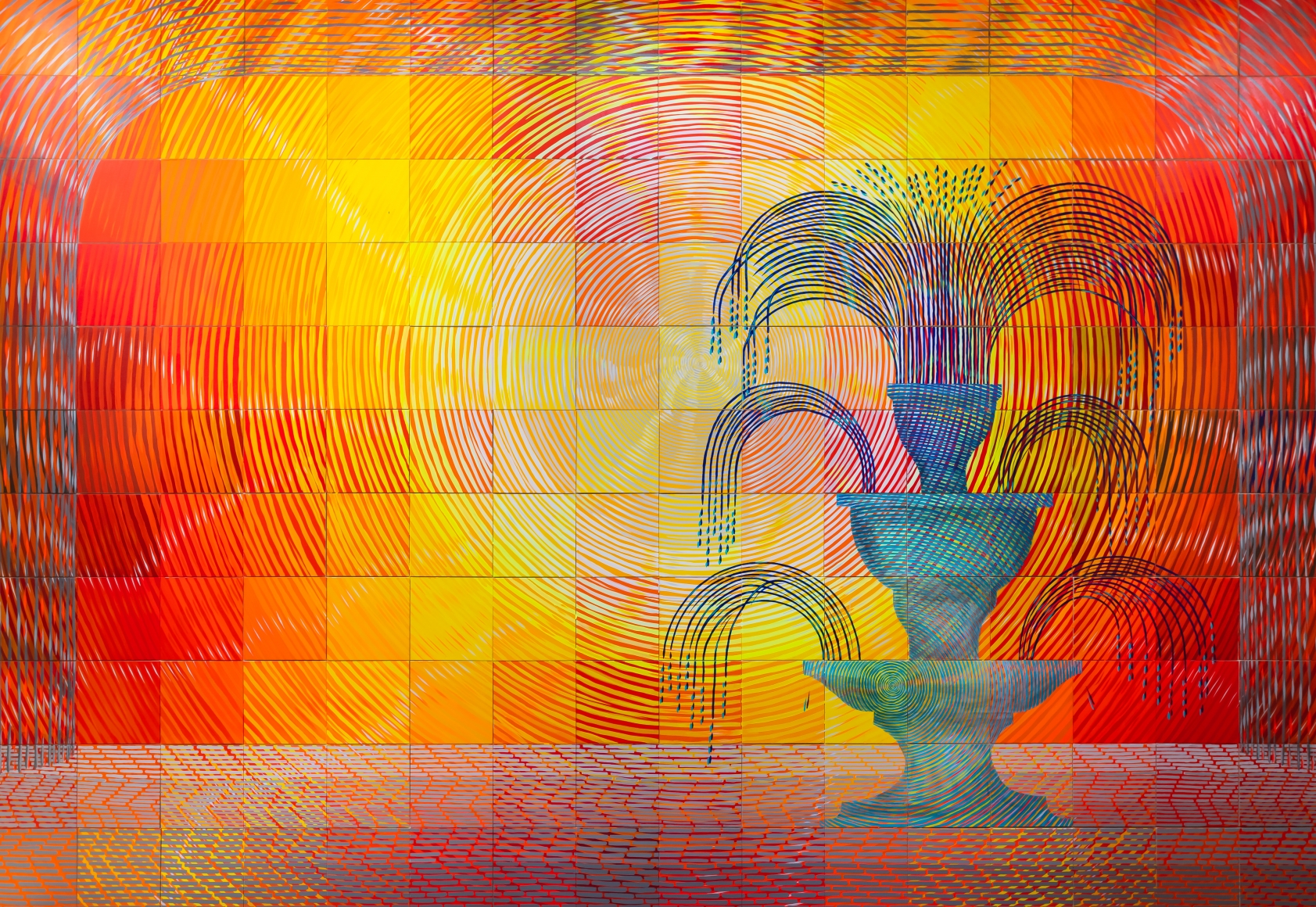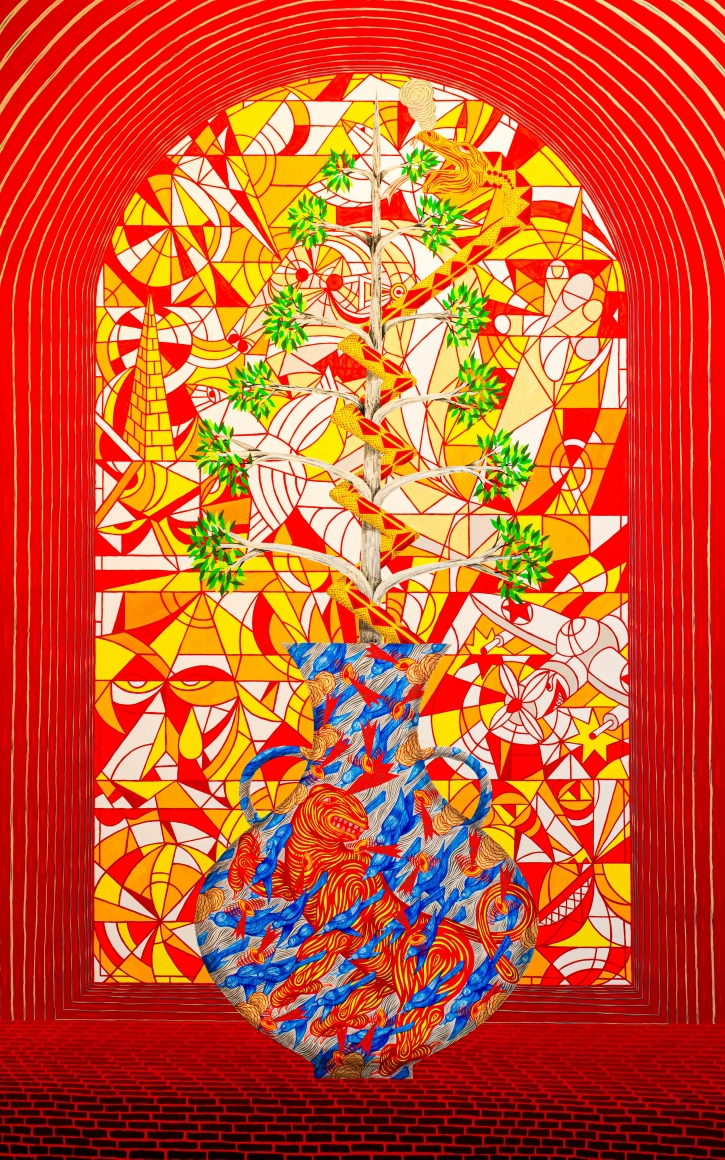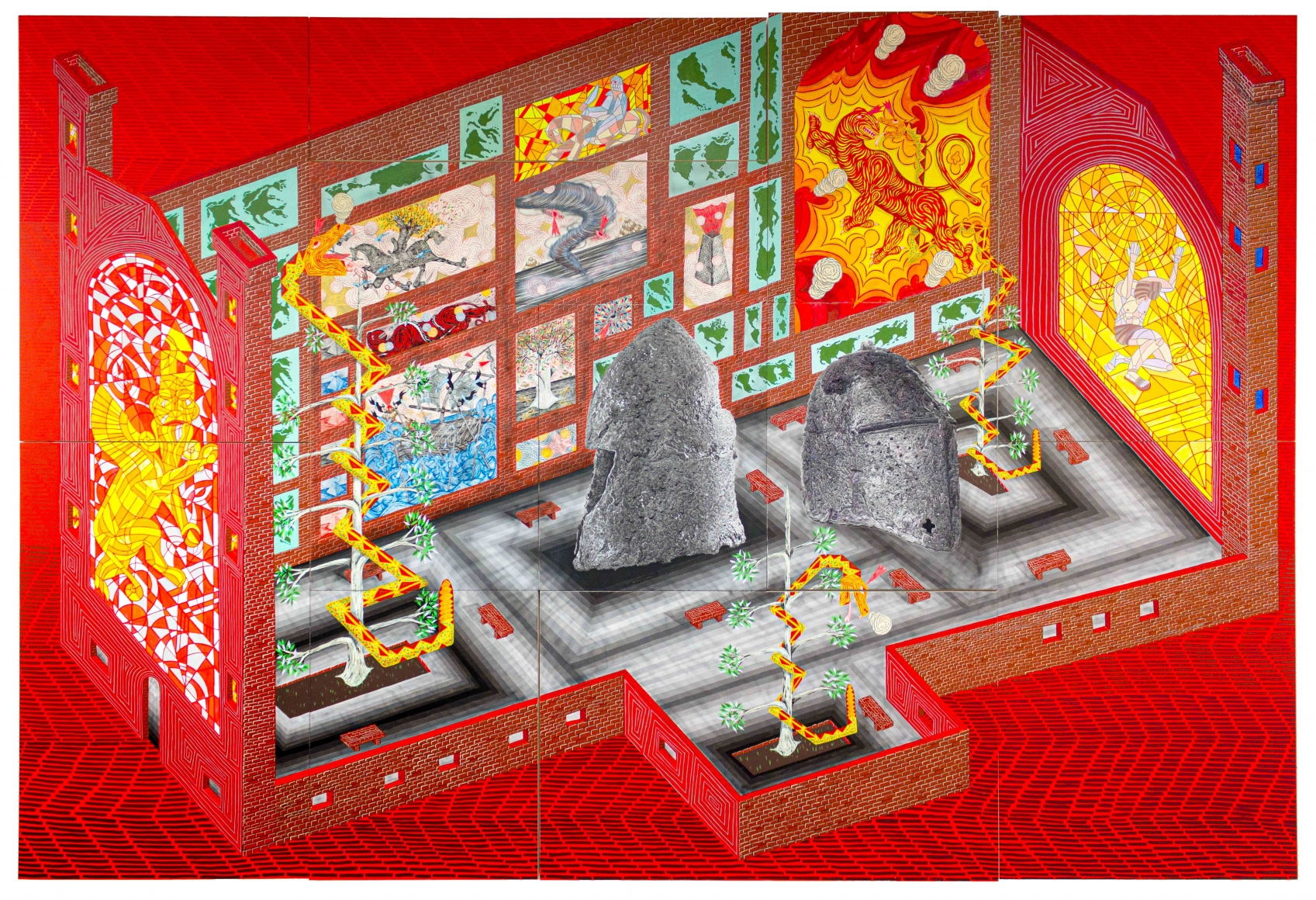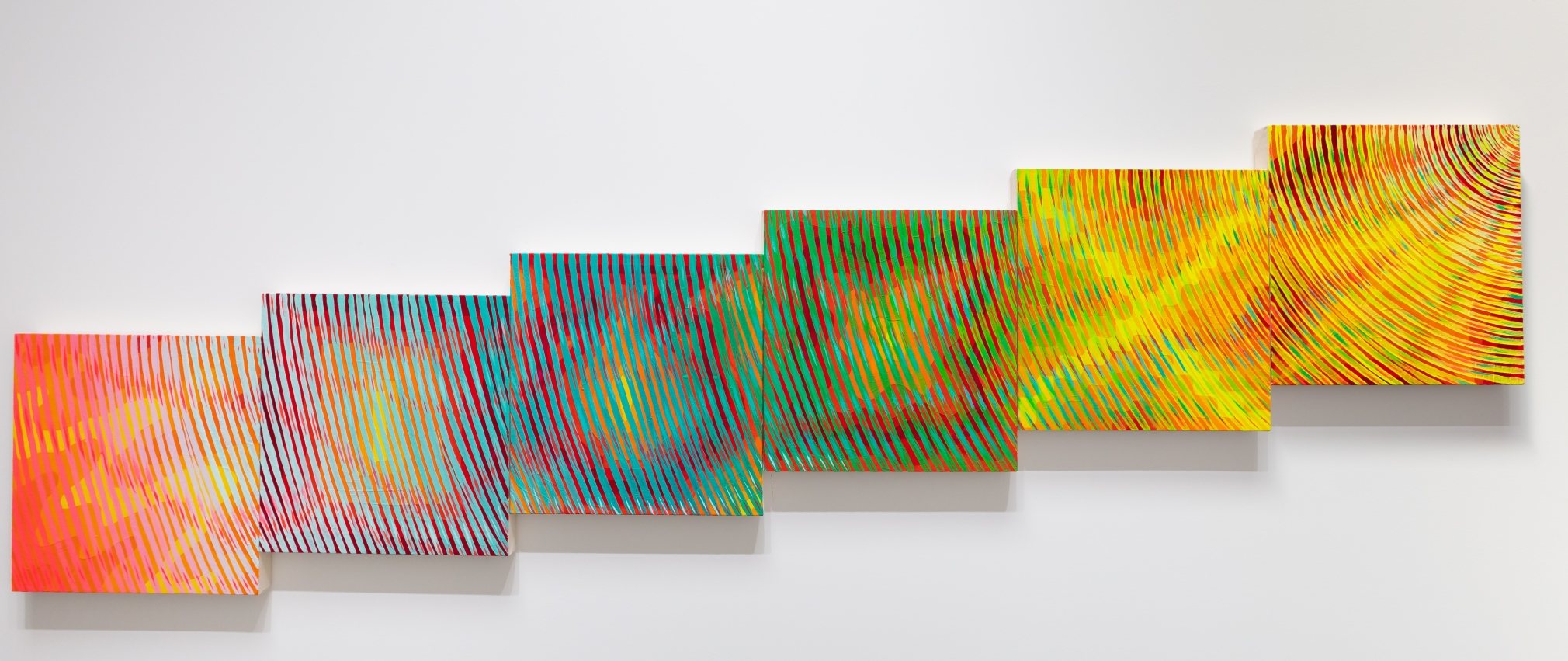In his installation Vessels, Andrew Schoultz has transformed the gallery space into a fantastical and playful environment. He presents sculptures, paintings and works on paper in his signature style, using an array of concentric lines that define shapes and objects —ranging from the pyramid and all-seeing eye from a dollar bill, to elaborate dragons and vessels (ships and vases)— that while abstracted, also allude to a greater narrative. Schoultz’s brightly colored works are infused with themes drawn from popular culture, history and life including war, the environment and human mortality.

Andrew Schoultz, FOUNTAIN, (2019). 156.75h x 228w in, acrylic on canvas. Courtesy of DENK Gallery.
With Escher-esque compositions and distorted perspectives, Schoultz’s imagined worlds combine geometric shapes with more natural elements like cascading waves, puffy clouds, and leafy trees. He conceived of this show as an installation and carefully choreographs how viewers move through the works. He provides numerous painted benches —places to sit and contemplate— as well as a colorful archway constructed from foam blocks painted in tones of yellow, orange and red that functions as a gateway into the bowels of the exhibition. Once through this arch, viewers immediately see Fountain, a monumental painting comprised of 176 square panels. In this piece, hundreds of yellow, orange and red concentric circles emanate from a central point, becoming an image of a radiating sun in front of which sits a fountain spouting blue arcs whose endpoints drip into a watery horizontal plane.

Andrew Schoultz, FROM THIS WINDOW, COMES LIGHT AND LIFE, (2019). 96h x 60w in, acrylic on canvas. Courtesy of DENK Gallery.
In many of these new paintings, Schoultz juxtaposes two distinct styles of mark making. The contrast between his signature style —tightly drawn lines and more loosely rendered shapes he has begun using to create a stained glass effect— is both startling and refreshing. From this Window Comes Light and Life is a large work whose foreground features a gigantic vase decorated with a swarm of blue birds, yellow-orange eyes and a red and yellow four-legged monster that is more tiger than dragon. From this vessel sprouts a tree and a snake-like creature that zig-zags up the composition. More cartoony than menacing, the snake appears to be feasting on the green leaves at the top of the plant. Geometric shapes outlined in red and filled in a range of yellow, white and orange tones form a complex stained glass window that serves as the background of the painting. Schoultz frames this arch-shaped window with red and white striped lines. He also paints a red brick floor on which the large vase sits. The eye oscillates between the foreground and background, trying to make sense of this dense layering.
Cathedral is another large, multi-panel painting that spans the far back wall of the gallery. While potentially the last piece viewed, it is in many ways the centerpiece of the show as it depicts an exhibition of Schoultz’s works placed within an isometric view of a cathedral. Seen from both inside and out, Schoultz’s elaborately rendered cathedral is filled with gigantic gray-toned, cave-like rocks, trees that serve as the support for snakes that extend from floor to ceiling, stained glass windows depicting mythical creatures and an arrangement of paintings hung salon style on a brick wall. The painting almost feels like it can be entered, and begs for extended viewing. It is a pleasurable experience to let the eye wander across the composition and then back into the ‘real’ gallery space.

Andrew Schoultz, CATHEDRAL, (2019). 146h x 212w in, acrylic on canvas.Courtesy of DENK Gallery.
Schoultz’s smaller paintings and works on paper are as demanding to look at as his larger pieces. He takes the eye and the mind on a visual journey that weaves through time and space, indulging in the representation of the real and surreal as abstracted forms. Schoultz draws from history as well as from the present to create scenes and environments that are simultaneously enticing and unsettling.
Andrew Schoultz, Vessels, September 21 – November 2, 2019
DENK Gallery, 749 East Temple Street, Los Angeles, CA 90012
http://www.denkgallery.com


